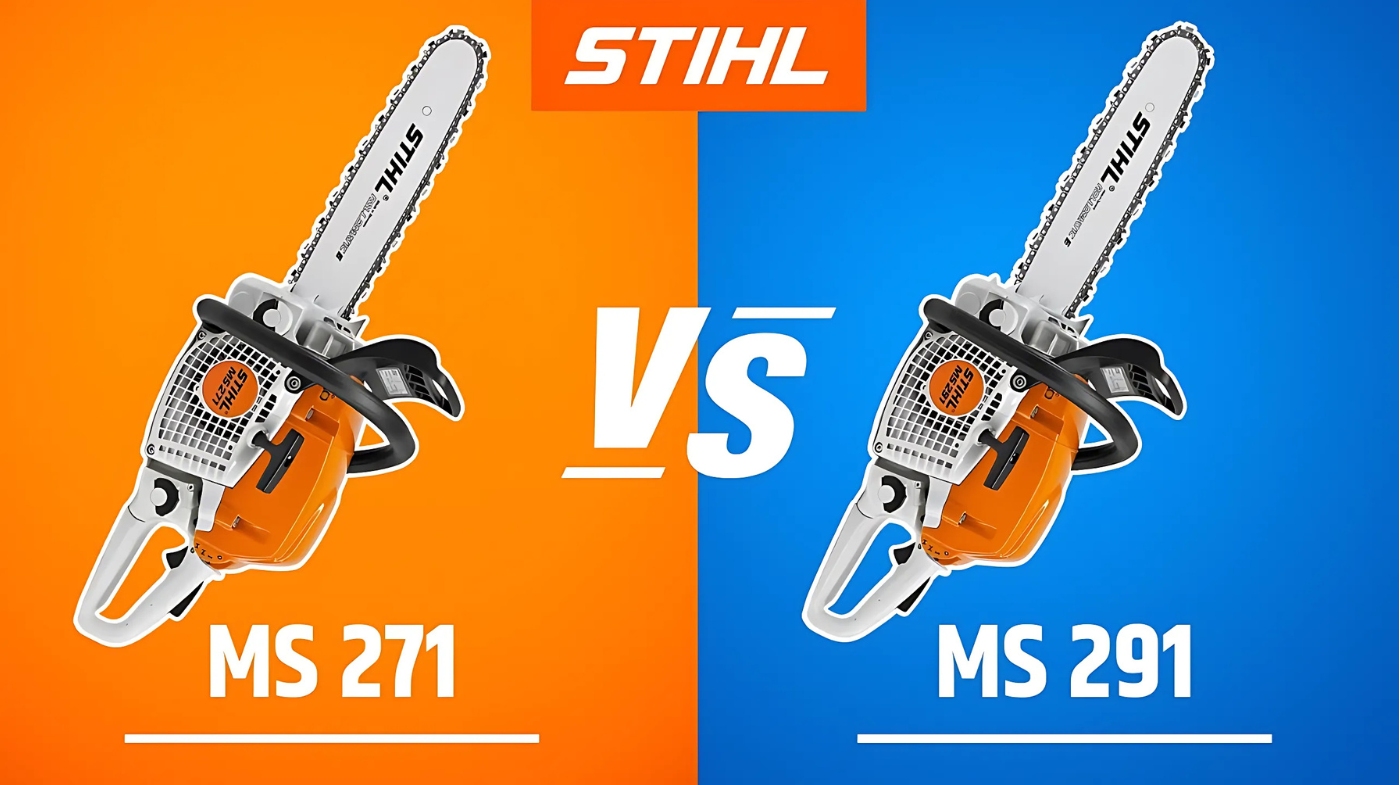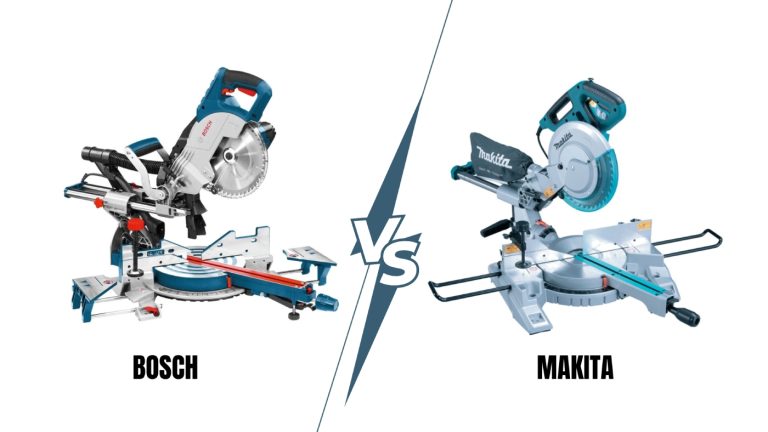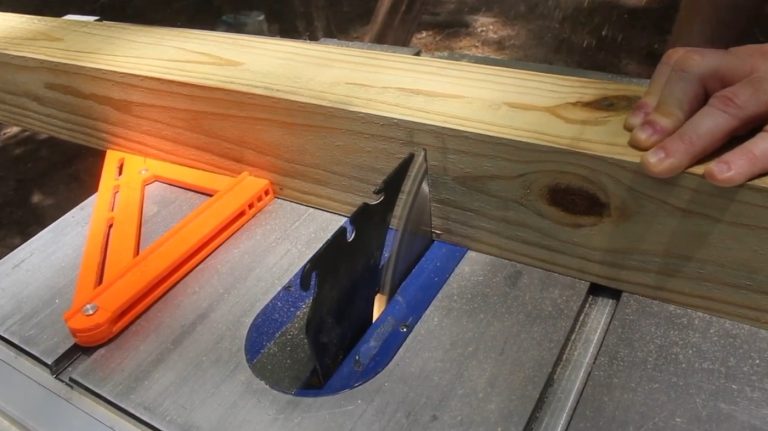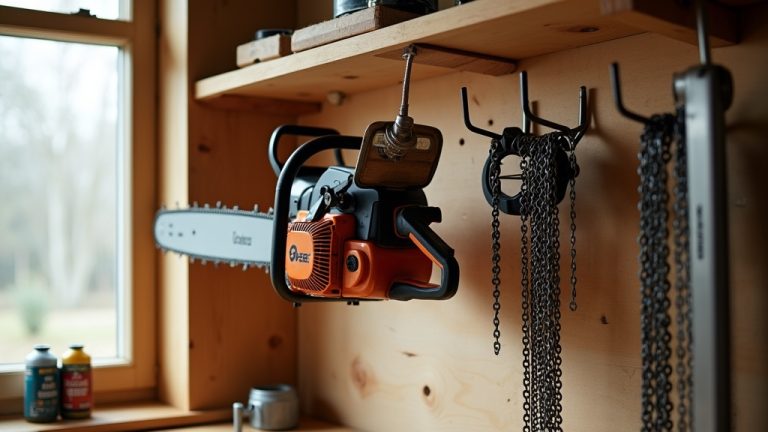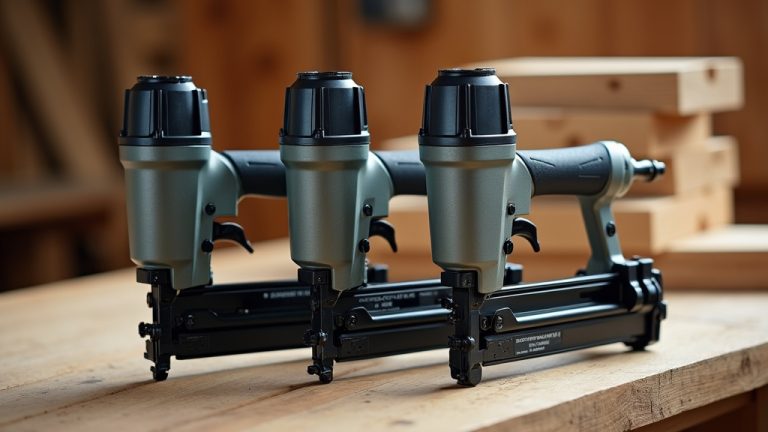Stihl 271 vs 291 Chainsaw: Key Differences You Need to Know
If you’re choosing between the Stihl MS 271 and MS 291, consider their performance differences: the MS 291 boasts a larger 55.5 cm³ engine producing 3.8 hp, making it more suitable for heavy-duty, professional tasks, while the MS 271 offers 3.49 hp from a smaller 50.2 cm³ engine for lighter jobs.
Durability, handling, and noise levels also vary, with the MS 291 designed for rigorous use and increased longevity. To determine which fits your needs best, explore these detailed distinctions further.
Key Takeaways
- The MS 291 has a larger 55.5 cm³ engine producing 3.8 hp, compared to the MS 271’s 50.2 cm³ and 3.49 hp, ideal for heavy-duty tasks.
- MS 291 features more robust build quality and higher durability, suitable for demanding professional use; MS 271 is lighter and better for casual tasks.
- Both weigh around 12.3 lbs, but MS 291 offers slightly higher vibration damping and power, with the MS 271 being quieter.
- The MS 291 offers better fuel efficiency, advanced features, and suitability for intensive applications.
- Overall, MS 291 is ideal for professional, frequent work, while MS 271 suits light landscaping and occasional use.
Engine Performance and Power Output
When comparing the engine performance and power output of the Stihl MS 271 and MS 291, it’s clear that the MS 291 offers a notable advantage in both areas.
The MS 291 produces 3.8 horsepower, exceeding the MS 271’s 3.49 hp, thanks to its larger 55.5 cm³ engine displacement versus the 50.2 cm³ of the MS 271.
Displacement is a key indicator of a chainsaw’s overall power. This increased displacement directly translates to higher torque and better performance in demanding tasks.
The MS 291’s engine is optimized for more intensive use, making it suitable for heavy-duty logging and professional applications.
While both models utilize Stihl’s efficient 2-Mix technology, the MS 291’s enhanced power output ensures faster cuts, improved productivity, and better handling of tougher materials, giving it a clear edge in high-performance scenarios.
Additionally, the engine design of the MS 291 contributes to its durability and ability to sustain prolonged operations under challenging conditions.
Design and Build Quality
Although both the Stihl MS 271 and MS 291 are designed for durability, their construction materials and structural features reveal important differences that impact overall build quality.
The MS 271 employs a plastic chassis and side covers, which keep weight low but may reduce long-term durability compared to metal components.
Additionally, the MS 291, while similar in structure, may incorporate more robust materials or upgrades for handling heavier workloads.
The absence of metal parts in the MS 271 reflects a focus on cost efficiency and practicality, whereas the structural integrity of the MS 291 aims for increased resilience.
Features like the bucking spike attachment and sight lines further influence durability and user experience. Overall, the build quality of the MS 271 prioritizes lightweight functionality, with the MS 291 leaning toward increased resilience.
Handling, Weight and User Comfort
Both the Stihl MS 271 and MS 291 offer balanced handling thanks to their ergonomic grips and anti-vibration systems, making extended use more comfortable.
Their similar weights and weight distribution influence maneuverability, with minor differences affecting user control.
Examining vibration reduction and ergonomic design reveals how each model prioritizes user comfort during demanding tasks.
Additionally, the engine design of both saws contributes to their overall handling, ensuring users can operate them with precision and less fatigue over long periods.
The choice between these models may also be influenced by their motor power, which affects how smoothly they perform during prolonged use.
Ergonomics and Grip
The ergonomic design and grip of the Stihl MS 271 and MS 291 are closely aligned, offering similar handling experiences that emphasize user comfort and control.
Both models feature ergonomic grips that minimize fatigue, with thoughtfully positioned controls for easy access. Their balanced chassis and weight distribution aid handling, ensuring stability during use.
Additionally, vibration reduction technology diminishes strain over extended periods, and safety features like chain brakes enhance confidence.
You’ll find: – Similar handle shapes designed for natural grip – Controls within easy reach to streamline operation – Vibration damping systems to reduce user fatigue – Well-balanced weight distribution for stability – Ergonomic components tailored for prolonged comfort which helps decrease operator fatigue during extended use.
Furthermore, the ergonomic design of these chainsaws contributes to improved safety and efficiency on the job.
Weight and Maneuverability
When comparing the Stihl MS 271 and MS 291, their nearly identical weights—around 12.28 lbs and 12.35 lbs—show that handling and maneuverability differences are minimal.
Both models have similar chassis design, ensuring balanced operation and stable control. The comparable weight distribution and ergonomic features help reduce fatigue, allowing for precise control in various tasks.
The slight weight variation doesn’t considerably impact maneuverability or user comfort during extended use. Although the MS 291’s marginally higher power-to-weight ratio offers a performance edge, it doesn’t alter handling notably.
Overall, both saws provide easy handling, smooth control, and comfortable operation, making weight and maneuverability factors effectively equivalent for practical purposes.
Your choice will primarily depend on power preferences rather than handling differences. Additionally, their similar weights contribute to comparable maneuverability in different working conditions.
Vibration and Comfort
Vibration levels and user comfort are key factors influencing prolonged operation and overall handling of the Stihl MS 271 and MS 291.
Both models feature an anti-vibration system that minimizes vibrations at 4.5 m/s² on front and rear handles, reducing fatigue and strain.
The ergonomic handles improve grip and control, while the side-access chain tensioner and toolless caps streamline maintenance, enhancing user convenience.
Although both saws produce similar vibrations, the slightly quieter MS 271 at 114-115 decibels may offer marginal comfort advantages in noise-sensitive settings.
The key distinctions include: – Equal vibration reduction performance – Similar ergonomic handle design – Slightly lower noise level in MS 271 – Enhanced handling via bumper spikes – Quick maintenance features for prolonged use these elements collectively influence comfort, making handling more precise and less fatiguing.
Additionally, the lightweight design of approximately 12.3 lbs. contributes to easier maneuverability and less operator fatigue during extended use, improving overall user comfort and control.
Noise Levels and Safety Features
Although both the Stihl MS 271 and MS 291 are designed with safety in mind, their noise levels differ slightly, impacting user comfort and protective requirements.
The MS 291 produces about 116 decibels, slightly louder than the MS 271’s 114-115 decibels, which can influence the choice of ear protection.
Both models include safety features like anti-vibration systems and mufflers, but the MS 291 explicitly highlights vibration reduction, reducing fatigue.
The engine design and sound-dampening components contribute to overall noise reduction. Additionally, sound levels can vary depending on the working conditions and maintenance, affecting long-term user comfort.
Similar weights for balanced handling. Noise differences influence hearing protection needs. Both models require safety gear like ear protection and gloves.
Muffler systems manage emissions and noise output. Slight noise variation impacts user comfort during extended use.
Suitable Applications and User Recommendations
Choosing the right chainsaw depends heavily on your intended tasks and how frequently you plan to use it. For felling large trees, the MS 291 offers a slight power advantage, making it better suited for demanding jobs.
Both saws excel in firewood cutting and storm cleanup, but the MS 291’s higher power enhances efficiency during heavy-duty tasks.
The MS 271 is ideal for light landscaping and casual use, thanks to its lower cost and sufficient power. Consider the table below for a clear comparison:
| Application | MS 271 | MS 291 | Recommended User |
|---|---|---|---|
| Felling Trees | Suitable for smaller trees | Slightly better for large | Occasional to professional |
| Firewood Cutting | Effective, moderate power | Better for heavy loads | Casual to frequent users |
| Storm Cleanup | Handles debris well | Slightly more efficient | Regular users |
| Landscaping | Light tasks | Heavy-duty work | Hobbyists to professionals |
Frequently Asked Questions
How Often Should I Perform Maintenance on Each Model?
You should perform maintenance regularly on both models to guarantee ideal performance. After every use, clean the saws, check chain tension, and lubricate the chain.
Weekly, inspect the air filter and guide bar, and sharpen the chain. Monthly, examine the clutch drum, anti-vibration components, and overall condition.
The MS 271 requires less frequent filter maintenance due to its superior system, while the MS 291 benefits from more detailed component inspections.
Are Parts Readily Available for Both Chainsaws?
Parts for both chainsaw models are generally easy to find due to widespread availability from official Stihl sources and aftermarket suppliers.
You can source common components like chains, bars, and filters from multiple vendors, often at competitive prices.
However, engine-specific parts such as crankshaft bearings and seals might require careful sourcing, as quality and compatibility can vary. Online forums and local dealerships are valuable resources for ensuring you get reliable, compatible parts.
Which Model Has Better Fuel Efficiency?
You’re comparing fuel efficiency between these two chainsaw models. The first model consumes about 0.37 gallons per hour, while the second uses around 0.39 gallons.
Despite slightly higher fuel use, the second offers enhanced engine technology, longer run time, and better cutting power.
Can Both Saws Handle Heavy-Duty Logging Tasks?
You might think both saws can handle heavy-duty logging equally, but examining their features shows differences.
The MS 291 is designed for demanding tasks, with better fuel economy and more power, making it more suitable for heavy logging. The MS 271, while capable, is slightly less robust.
Stihl 271 or 291 Chainsaw? Make the Right Choice for Your Workload
Choosing between the Stihl 271 and 291 depends on your specific needs. Think of it like selecting a vehicle: the 271 is a nimble sports car, ideal for smaller jobs, while the 291 is a rugged truck, built for heavy-duty tasks.
The 291 offers slightly higher power and better durability, but at a higher cost. Carefully weigh these factors against your workload to guarantee you pick the saw that drives your projects forward efficiently.

